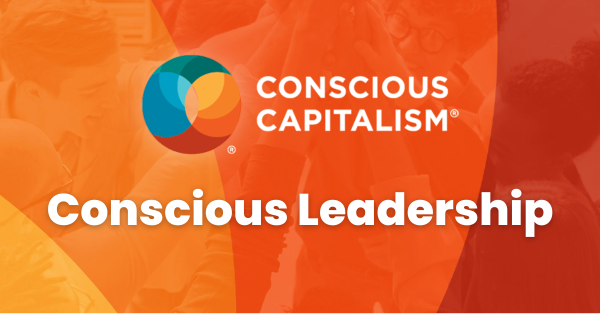At the heart of our digital age lies a fundamental truth: if products and services do not meet human expectations, then the teams and companies behind them will struggle. User Experience (UX) should not be confined to the realms of design, and as a pivotal component of digital transformation, it is essential for any team or organization aiming to thrive in today's tech-driven landscape by delivering excellence in their products and services.
I hope that by the end of this blog series, you will be armed with knowledge and strategies that make UX a tangible part of your human-centered digital transformation journey.

Why the UX Mindset Matters
The UX mindset is foundational to navigating the rest of this series. It goes beyond mere job titles, embodying a broader philosophy that influences how we approach design, technology, and business strategy. This mindset is about understanding and implementing UX principles in a way that aligns with and enhances your digital transformation goals.
Unpacking Misconceptions
A significant barrier to adopting a UX mindset stems from widespread misconceptions about its role and relevance. Common fallacies reduce UX to mere aesthetics or user interfaces, overlooking its profound impact on product functionality, user satisfaction, and overall business success. We are aiming to dismantle these myths, revealing UX as a multifaceted discipline integral to all aspects of digital development.
The Evolution of Design and UX
Understanding the historical context of design and its evolution helps clarify the position of UX within this broader narrative. While design as a discipline has seen centuries of development, UX design is a modern emergence, gaining prominence with the rise of digital technology. Yet, despite its youth, UX design is a critical player in the tech industry, shaping how users interact with digital products and services. It is also of immense importance to understand that UX goes even beyond the digital realm, but that is a topic for another time.
Understanding the evolution of design as a set of disciplines and professions and its convergence with User Experience (UX) is essential for grasping the significance of the UX mindset in our digital era. This journey is not just about the progression from physical to digital but about the philosophical shifts that have allowed design to become a cornerstone of technology. That said, let us dive into the general aspects of this evolution.
The Roots of Modern Design
Design, as a form of human intelligence and ability, has roots stretching back to the dawn of civilization, yet it's the developments in the early 20th century that most directly inform our contemporary understanding of Design. The Bauhaus, emerging in Germany in 1919, marked a pivotal moment, advocating for the fusion of art, craft, and technology. This movement laid the groundwork for design to be seen not just as aesthetic enhancement but as a method of problem-solving that could improve every aspect of human life.
The Expansion into Industrial Design
A significant leap occurred in 1934 at Carnegie Mellon University in Pittsburgh, which established the first industrial design program. This marked the professionalization of industrial design, extending its reach into mass production and consumer goods. Industrial design's focus on user interaction with physical products set the stage for thinking about how people interact with non-physical systems and services—a precursor to UX design.
The Silicon Valley Influence

The history of Silicon Valley provides a fascinating lens through which to view the integration of design into technology. As tech enterprises flourished, they required the expertise of industrial designers and information architects, leading to the evolution of roles such as interaction designers. This period underscored the importance of design in creating intuitive and effective user interfaces, bridging the gap between complex technology and its users.
The Emergence of UX Design
The term "UX design" itself owes its origin to cognitive scientist Don Norman in the early 1990s. While at Apple, Norman introduced the concept of user experience to address how every aspect of a product, from its design to its functionality and usability, impacts the user. This comprehensive approach to design highlighted the importance of understanding users' needs, behaviors, and emotions, fundamentally changing how products were developed.
The Digital Revolution and Its Impact
With the advent of the internet and later, the mobile technology revolution sparked by devices like the iPhone and iPad, the need for web and app design exploded. Designers transitioned from focusing on static graphics to creating dynamic, interactive experiences, leading to the blend of UI (User Interface) and UX design disciplines. This era underscored the necessity of UX design in crafting digital experiences that are not only visually appealing but also user-friendly and accessible.
The Shift Toward a Broader Understanding of UX
Today, the tech industry increasingly recognizes that UX is not a mere step in the design process but a comprehensive approach that encompasses every aspect of the user's interaction with a company and its products. This shift towards a broader understanding of UX underlines its importance not just in Product Design but as a critical component of business strategy and digital transformation with strategic approaches like Service Design and Customer Experience (CX).
Embracing a UX Mindset
Adopting a UX mindset is about recognizing that UX is everyone's responsibility—not just designers or UX professionals. It's a collaborative effort that requires input from all stakeholders to ensure that digital products are not only functional and visually appealing but also deeply resonate with users' needs and preferences.

The Path Forward
Throughout this series, we'll explore the principles that underpin a successful UX mindset, including empathy, adaptability, and a commitment to ongoing learning and improvement. We will go forward on the trail of UX maturity and how teams and organizations can measure and grow the UX mindset with actionable strategies and principles. Later we will review how UX-integrated teams and organizations can deliver excellence in their products and services by streamlining workflows with Design Thinking frameworks and more UX principles. Finally, we will see how outcome-driven cultures with strong leadership embracing the UX mindset can impact big time all their stakeholders, clients, customers, and communities.
"UX for Everyone" is more than just a slogan; it's a paradigm shift towards a more inclusive, empathetic, and human-centered approach to digital transformation. By embracing a UX mindset, we can collectively contribute to creating digital products and services that truly meet users' needs, driving success in an increasingly digital world. Reach out to us if you want to find out how we can use our UX expertise to help your organization.
This blog was crafted in conjunction with an Improving webinar talk titled "The UX Mindset". Watch the video below.




